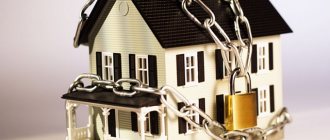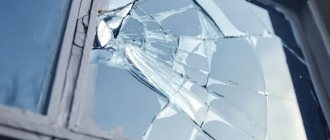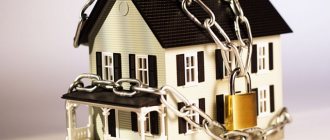At what amount of damage does criminal liability begin? The article of the Criminal Code of the Russian Federation provides for criminal liability for the intentional destruction or damage of property, regardless of the method of causing the damage. The subject of the crime is someone else's property in the sense of a material thing. Destruction and damage to property that is in common ownership of a person with other persons is qualified under Art. When property is destroyed, when its restoration and use for its intended purpose is impossible or economically inexpedient, the amount of damage is determined as the value of the property at the time of its destruction.
Minor pecuniary damage in criminal law
The task of the state is to protect the victim of crime, while in accordance with the Constitution of the Russian Federation, the rights of crime victims are protected by law, the state provides victims with access to justice and compensation for damage caused. One of the socially dangerous acts from which the property of victims suffers is the destruction and damage of someone else’s property, as such they are presented in the article of the Criminal Code of the Russian Federation, which provides for criminal liability for the intentional destruction or damage of someone else’s property if these acts entailed significant damage.
By placing Art. Part one art. The subject of the crime under Art. Destruction of property means rendering it completely unusable. Destroyed property cannot be restored. It cannot be used for its intended purpose. Damage is understood as causing harm to a thing, significantly reducing its consumer value.
Damage to property presupposes the possibility of using it in a damaged state and or the possibility of restoring it to its previous condition. The text of the article of the Criminal Code of the Russian Federation does not contain criteria for determining the significance of damage, and does not indicate the lower and upper cost limits of significant damage. At the same time p.
In judicial practice, when deciding whether significant damage has been caused to the owner or other holder of property, courts proceed not only from the value of the destroyed property or the cost of restoring damaged property, but also the significance of this property for the victim, for example, depending on the type of his activity and material position or financial and economic condition of the legal entity that was the owner or other possessor of the destroyed or damaged property.
The motive for committing intentional destruction or damage to someone else’s property in Art. As evidenced by statistics from 28 criminal cases against 28 people, directed by the investigative authorities under Art. Methods of destruction and damage may be different; the most dangerous of them are provided for in Part. Thus, the intentional destruction or damage of someone else’s property, committed out of hooligan motives, by arson, explosion or other generally dangerous method, entails criminal liability under Part.
However, it should be noted that liability under this article occurs only in the event of actual significant damage to the victim. If, as a result of these actions, the consequences provided for by law did not occur for reasons beyond the will of the perpetrator, then what he did, if he had the intent to cause significant damage, should be considered as an attempt to commit this crime.
Hooligan motives include, for example, the desire to oppose oneself to society, the commission of an act without motive or its commission for a minor reason. In this case, the perpetrator acts on the property of the victim not with the aim of taking revenge on a specific person for something, but wants to show his superiority, cynicism and disrespect, for example, towards a social group of wealthy citizens or towards society as a whole. It should be noted that the use of fire in itself is not sufficient to qualify the offense under Part.
The deliberate destruction or damage of individual objects using fire under conditions that exclude its spread to other objects and the emergence of a threat of harm to the life and health of people, as well as other people's property, must be classified under Part. A generally dangerous method is understood as a method that creates a threat of destruction of property an unlimited number of persons or a threat to their life and health by explosion, arson, flooding, etc.
The subject of a crime under Part Two of Art.
Determining the type and amount of harm caused is important not only for resolving the issue of compensation to the victim, but also for qualifying the crime, distinguishing it from an administrative offense, since these acts differ in the degree of public danger, expressed primarily in the amount of harm caused. Let us analyze what types of harm are caused by crimes against property and how they should be calculated. First of all, let us turn to the general provisions of civil law, as well as the section on tortious obligations resulting from causing harm.
To protect rights and legitimate interests, it is necessary to understand the criteria that form the crime under Art. At the same time, one of the main criteria delimiting liability under these articles of the Criminal Code of the Russian Federation is the intent of the person who destroyed or damaged the property. Thus, in case of intentional damage to property, liability arises under Art. However, one of the main criteria for bringing a person to criminal liability is the cost of the property or its repair.
Property damage – assessment and compensation
It is good when everything is good. But that doesn't happen. Various kinds of troubles may occur in your life: illness, accident, dismissal from work, etc. It is better if you, as a representative of civil society, have the knowledge and, most importantly, the ability to get out of such situations. One of these troubles: your property has been damaged by third parties or due to your fault someone else’s property has been damaged. In the first situation, you need to receive full and fair compensation, and in the second, you need to minimize losses. This article is about how to achieve this.
Karimov M.A., especially for Klerk.Ru
1. Typical life situations requiring compensation for damage In a situation where an accident has occurred, everything is more or less clear: don’t touch anything, call a traffic police representative, open the annex to the MTPL policy and follow the instructions . The damage compensation system is generally well-functioning, although it raises many complaints.
It’s another matter if damage to real estate is caused, i.e. in a situation where:
- — Your apartment or office was flooded by your neighbors or you were flooded by companies located above you, through your own fault or the fault of the operating services;
- — the roof leaked or the wall’s seal was broken;
- — a fire occurred due to the fault of third parties, for example, neighbors or tenants;
- — other real estate accidents occurred, for example, cracks appeared during redevelopment, or neighbors moved in as a result of renovations;
- - all of the above happened through your fault, but the victim demands exorbitant, unjustified amounts;
- — You are not satisfied with the amount of insurance payments calculated by the insurance company;
- — counter-expertise is required to defend your position in court;
- — You are already suing the opposite party and want to involve an independent appraiser for a qualified assessment of the damage, or you have already achieved the appropriate court ruling.
Here you need to be patient and be prepared for a grueling months-long process (negotiations, court hearings) and significant costs.
So, first, let's arm ourselves with knowledge. 2. What you need to know or a little theory
If damage to property is caused, for example, when an apartment is flooded by neighbors, a fire, damage to a car during an accident and others that occur as a result of someone else’s actions, a citizen has a legal basis for restoring his rights and compensation for losses incurred, in accordance with Article 15 of the Civil Code of the Russian Federation ( "Indemnification"), which reads:
"1.
A person whose right has been violated may demand full compensation for the losses caused to him, unless the law or contract provides for compensation for losses in a smaller amount. 2. Losses are understood as expenses that a person whose right has been violated has made or will have to make to restore the violated right, loss or damage to his property (real damage), as well as lost income that this person would have received under normal conditions of civil circulation, if his right had not been violated (lost profits). If the person who violated the right received income as a result, the person whose right was violated has the right to demand compensation, along with other damages, for lost profits in an amount not less than such income.”
The provision on the mandatory involvement of an independent appraiser in the event of property disputes is contained in Article 8 of the Federal Law No. 135-F3 “On Valuation Activities in the Russian Federation”, which reads:
“An assessment... is mandatory... if a dispute arises about the value of an object....”
Damage, in accordance with the Law “On Valuation Activities in the Russian Federation,” is assessed by firms or individual entrepreneurs that have a license to conduct valuation activities and a professional liability insurance policy.
All appraisers are required to adhere to the assessment procedures and methods set out in the regulatory document: “Appraisal standards mandatory for use by subjects of appraisal activities”, approved by Decree of the Government of the Russian Federation of July 6, 2001 No. 519 “On approval of appraisal standards.”
To assess damage, appraisers usually use the cost method.
The premise of this method is that the value of any property depends on the cost of reproduction or replacement of similar property.
According to the cost approach, the cost of the appraised object is determined as the sum of the replacement cost of the component elements of the object minus the accumulated wear and tear. In relation to assessing damage from a flood or fire, the cost method involves calculating the estimated cost of repair and restoration work, taking into account the wear and tear of materials on the date of damage.
Replacement cost refers to the costs of recreating an object in its original form, including business profit. In this case, these are the costs of repair and restoration work on the interior decoration of the apartment according to the estimate, the costs of repairing or restoring damaged property (furniture, office equipment, documents, databases, etc.), the costs of dry cleaning of damaged property.
Accumulated depreciation is understood as the total loss of value of the appraised object at the time of appraisal in percentage terms, under the influence of physical, functional and external factors.
The cost of damage is calculated in three stages .
At the first stage, based on data received from repair and other organizations, the market value of repair and restoration work for various types of property is determined, namely:
- the estimated cost of repair and construction work on the premises (estimates are made (for example, using the basis-index method) at the request of the Appraiser by a specialist estimator of an organization licensed to produce design and estimate documentation , based on inspection reports;
- cost of repairing property (appraisers obtain data on the cost of repairing and restoring furniture from price lists or as a result of surveys of repair organizations);
- the cost of cleaning damaged property (the appraiser receives data on the cost of dry cleaning via the Internet).
At the second stage, wear is determined as the sum of physical, functional and external wear . The physical wear and tear of the finish is determined in accordance with VSN 53-86(r) “Rules for assessing the physical wear and tear of residential buildings” (approved by order of the USSR State Construction Committee dated December 24, 1986 N 446).
Physical wear and tear of other property is determined by an expert method. Functional and external wear and tear of finishing and furniture are assumed to be zero if this type of finishing and this type of property continues to be produced on the market. At the third stage, the amount of damage is determined taking into account the wear and tear of materials.
The guilty party in the event of a flood or fire in residential buildings, as judicial practice shows, is recognized as:
- tenants who violated the relevant articles of the “Rules for the use of residential premises (Approved by Decree of the Government of the Russian Federation of January 21, 2006 N 25) or
- operating organization (former housing office), which violated the relevant articles of the “ Rules and Standards for the Technical Operation of the Housing Stock” (Approved by Resolution of the State Construction Committee of the Russian Federation dated September 27, 2003 N 170).
In non-residential buildings, these are, respectively, tenants or the company operating the building who have violated the provisions of the lease agreement.
3. It is better to prevent damage To prevent floods and accidents due to the fault of operating services (if communication pipes are leaking, the roof is leaking, walls are depressurized, cracks have appeared) you should take the following actions.
On behalf of a group of residents, you should contact the head of the operating organization (housing office, housing department, KECH, etc.) in advance with a reminder of the need for repairs, referring to the relevant articles of the “ Rules and Standards for the Technical Operation of the Housing Stock . This is usually a valuable letter with return receipt requested. It is advisable to copy written requests. According to the “Rules...” operating organizations have various deadlines for eliminating deficiencies upon written application from residents. If there is no response within a month, a similar letter with the addition of a complaint about the official’s inaction should be sent to the head of the Housing Inspectorate of your district. Housing inspectors check the facts stated in the letter and, in turn, can issue orders or even fine officials. Another copy of the letter can be sent to your deputy, who will forward the request to the authorities, and they are obliged to respond on the merits. Such a total siege usually brings results.
If you are re-equipping the water supply system, i.e. changing the pipe layout, installing a water heater, laying a flexible supply hose, etc., then coordinate all your actions with the operating organization and, if necessary, carry out its employees. Be sure to keep ALL receipts, checks and receipts for renovation work in your apartment, office, as well as receipts for furniture, carpets and office equipment. Get yourself into this habit; these days it will save you a lot of money.
4. An unpleasant event happened. Get ready for trial
So, the unpleasant event happened. What should be done? The first step, of course, is to pull yourself together and stop the flow of water into the room. If your neighbors are drowning you, then go to them; if they are not at home or the flood occurred due to a communications failure, call immediately the control room of the operating organization. Don't forget to find out under what number your call is recorded in the log.
Don’t worry and don’t get into an altercation with the culprit; you won’t immediately determine objectively who the real culprit is and what the cost of the damage is. The culprits may be both operating organizations and neighbors.
Call an employee of the operating organization (housing department) to record the fact of the accident. He will draw up an appropriate report that fully describes all damage caused to the premises and your property. One copy of the act must remain with you (if you do not have it, then at least remember its number and date of preparation, then you can request it through the court).
If possible, invite two witnesses. It could be your neighbors.
If as a result of these events your or your loved ones’ health has suddenly deteriorated, call an ambulance or a doctor at home. He will record your condition and take the necessary measures.
Housing department workers should be called even for minor damage. Defects may appear later in a larger volume, since some of the water may be retained in the ceiling structures.
It is advisable to call housing department workers if traces of flooding appear in other premises, otherwise at trial the culprit may say that defects not recorded in the housing department report are not his fault. When drawing up the report, be careful to record all damage as accurately as possible.
After all traces of the accident have appeared (if there are floods, wait for the room to dry out), you should meet with the person responsible for the accident and try to resolve the issue without going to court. This is where saved checks and receipts would come in handy to justify the amount requested for payment. Please also mention that if the culprit of the flood does not agree to pay for the repair of your premises, you will go to court, and if the court finds him guilty, the culprit of the flood will also have to pay your legal costs. These include the cost of assessing damage, lawyer's services, etc. Sometimes this works - a person is afraid of legal troubles. In general, it happened more than once that a potential defendant was frightened by an invitation to an examination (both the neighbor and the exploiters), and the case was settled peacefully. But under no circumstances should you relax before the money is in your hands. The outcome of the negotiations should be the amount of compensation and the deadline for you to receive it.
If it was not possible to settle the issue amicably, or you are being fed promises, look for a lawyer who specializes in similar cases. The appraiser can also recommend a lawyer, since the judge often calls the latter to court as an expert. You can, of course, write a statement of claim yourself, but a competent lawyer will take into account all additional factors (for example, moral damages, lost profits from renting a flooded premises), and the amount spent on paying for his services will be returned to you if the case is successful.
After showing all traces of the accident, invite an independent appraiser to record (photograph), measure the amount of damage and draw up an inspection report. The inspection is carried out in the presence of the guilty party, whom you must notify in advance by telegram with notification of delivery (the text of the telegram and the terms will be indicated by the appraiser). The guilty party may, of course, ignore the invitation or not sign the Act, but in this case he will have a less advantageous position at trial. The inspection report is the main legal document for the subsequent preparation of estimates for repair and restoration work, as well as for assessing the damage caused by the flood to your home property (carpets, furniture, equipment, etc.).
When preparing estimates, the cost of materials is taken at market prices, if you have kept receipts and checks. If not, the cost of materials is determined according to the “Federal Collection of Estimated Prices for Materials, Products and Structures Used in Construction” and according to the “Catalogue of Current Prices in Construction”. But prices for work are accepted by the state with coefficients established by pricing centers (Federal unit prices for construction work FER-2001 and for repair and construction work FERr-2001 of the Gosstroy of Russia, in Moscow MTsTS).
Thus, the cost of the work turns out to be slightly lower than the real one, although the final figure depends on the qualifications and experience of the estimator. This is a common practice in the courts and an artificial increase in the cost of repairs can lead to the loss of the case in court.
There is no need to rush to call an appraiser on the day of the pour. After drying, traces of the flood are visible even better. Before calling an appraiser and fixing the defects, do not under any circumstances eliminate traces of damage; no one will draw up an estimate based on the housing department report, and if they agree, run away from such would-be experts.
If you are the potential culprit of the flood, and the cause of the flood is a poor-quality flexible hose (for this reason, a lot of floods occur) or excess pressure in the water supply system, etc. — urgently invite an expert and get an opinion on the cause of the accident.
From a legal point of view, you can make repairs to the premises immediately after receiving the damage assessment report, but from a practical point of view, first make sure that the premises have completely dried out (2-4 weeks). Water can linger, for example, in the voids of floor slabs.
After receiving the damage assessment report, you can once again try to settle the matter peacefully with the culprit. If this fails, prepare for litigation. Subject to compliance on your part with all formalities, i.e. All documents (appraiser’s report and license, statement of claim) are in order, the court will probably recognize that you are right.
And finally, two comments.
If you have already carried out repairs before the trial, and the amount required is significantly larger than that indicated in the appraiser's report, you may be tempted to file a claim for a different amount, justifying it with checks, receipts and estimates from the organization that carried out the repairs. But a winning outcome in this case is not guaranteed. If the defendant is a reasonable person, he may doubt the prices, and in turn ask the court for an examination, but believe me, your builders probably increased the prices, and this circumstance will come up in court.
You may have difficulty collecting money from the defendant if he is a drunken beggar or a poor pensioner. Then you will receive money for a long time. However, if such efforts are not made, in particular, if the facts of the bays are not recorded, then they will be repeated repeatedly. When the operating organization accumulates enough facts about your neighbor’s non-compliance with the “Rules for the Use of Residential Premises,” it can take action against the unscrupulous tenant, up to and including eviction. But that's another story.
The author is the head of the assessment department, audit and consulting group of ARNI Polaris International, Ph.D.
Hello Guest!
Enrollment is open for a unique advanced training course in management accounting three practicing teachers share their experience .
On the course you will find inspiration and new meanings in everyday work.
Sign up>>>
On criminal liability for intentional destruction or damage to someone else's property
Liability for the intentional destruction or damage of someone else's property Liability for the intentional destruction or damage of someone else's property March 30 Liability for the intentional destruction or damage of someone else's property, if these acts resulted in significant damage, is provided for in Art. Destruction presupposes the cessation of the physical existence of a thing and the complete unsuitability of its use for its intended purpose. Damage is characterized by a partial violation of the physical integrity of a thing, usually leading to deterioration of its useful properties, partial or temporary loss of them, which can be restored through repair, restoration, etc. To bring persons to criminal liability, significant damage must be caused to the owner or legal owner of the property . When deciding whether significant damage has been caused to the owner or other holder of property, one should proceed from the value of the destroyed property or the cost of restoring damaged property, the significance of this property for the victim, for example, depending on the type of his activity and financial situation or the financial and economic state of the legal entity. a person who was the owner or other possessor of the destroyed or damaged property.
An error occurred.
This is not written anywhere, it is obvious, since insurance does not prevent damage, it compensates for it. It is possible to insure life, but then why should death not be considered a serious consequence, but only the joy of the heirs? Minimum damage for initiating a criminal case 4. At the beginning of the court session, the judge announces which complaint is to be considered, introduces himself to the persons who appear at the court session, and explains their rights and obligations. Then the applicant, if he participates in the court session, substantiates the complaint, after which other persons who appeared at the court session are heard.
Zorkin, judges K. Aranovsky, A.
Explanation of the provisions of Art. The subject of the crime is someone else's property in the sense of a material thing. Destruction and damage to property that is in common ownership of a person with other persons is qualified under Art. When property is destroyed, when its restoration and use for its intended purpose is impossible or economically inexpedient, the amount of damage is determined as the value of the property at the time of its destruction. When property is damaged, the amount of damage is determined by the cost of repairing it or the reduction in its price as a result of damage, but cannot be estimated higher than the value of the property at the time of its destruction. These circumstances do not prevent compensation for losses in a civil claim by the victim in full, including lost profits. The damage must be significant. According to note 2 to Art. The law does not disclose the concept of significant damage if it is caused to an organization, state or municipality. When deciding whether significant damage has been caused to the owner or other holder of property, one should proceed from the value of the destroyed property or the cost of restoring damaged property, the significance of this property for the victim, for example, depending on the type of his activity and financial situation or the financial and economic state of the legal entity. a person who was the owner or other possessor of the destroyed or damaged property.
Your IP address is blocked.
The task of the state is to protect the victim of crime, while in accordance with the Constitution of the Russian Federation, the rights of crime victims are protected by law, the state provides victims with access to justice and compensation for damage caused. One of the socially dangerous acts from which the property of victims suffers is the destruction and damage of someone else’s property, as such they are presented in the article of the Criminal Code of the Russian Federation, which provides for criminal liability for the intentional destruction or damage of someone else’s property if these acts entailed significant damage. By placing art. Part one art.
.
.
violation of his constitutional rights by part two of the Criminal Code for intentional destruction of material situation or financial and economic reasons or using an insignificant reason (clause
The amount of damage, starting from which criminal or administrative punishment will be imposed in 2022
In the Russian Criminal Code, Section 8, Chapter 21, which regulates liability for theft of material assets, federal by-law number 323 - FZ in 2016 made the following amendments, which have legal force in the current 2022, liability for theft in the amount designated as:
- “large” comes starting from 250 thousand rubles;
- “especially large” – from 1 million rubles;
The amount of damage in case of theft from a civilian, designated as “significant”, is considered starting from 5 thousand rubles. This value can be adjusted taking into account the financial and property situation of the victim.
Petty, according to Part 1, Article 7.21 of the Administrative Code, is considered theft of no more than 1 thousand rubles. However, according to Part 2, Article 7.27 of the Administrative Code, such theft can be considered if the stolen amount is from 1–2.5 thousand rubles. That is, in the current legal field a kind of “sagging” has formed, which is expressed in the fact that the stolen amount ranges from 2.5–5 thousand rubles. can no longer be classified as an administrative offense and at the same time no criminal punishment has yet been imposed. This happened because the corresponding amendment was not made to the Administrative Code.
The concepts of “minor” and “significant” in relation to damage are absent in the text of the Civil Code of Russia. The Code defines various types of criminal acts causing property damage, for which administrative or criminal liability arises. The assistance of a lawyer in criminal cases is one of the main conditions that helps ensure that the investigative authorities correctly characterize the offense and obtain the maximum possible favorable decision in relation to the person who committed it.









